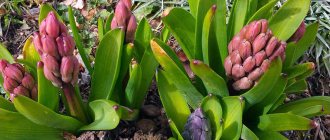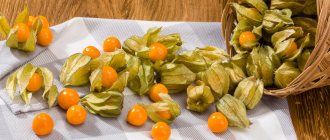Anemone is a southern perennial from the buttercup family. Planting anemones outdoors in autumn is practiced in regions with long, hot summers and mild winters. This is a delicate plant that does not tolerate extreme heat and cold. There are about 170 species of anemone, differing in the type of root system. Flowers with rhizomes are unpretentious and easy to care for. But hybrid tuberous varieties are capricious and require constant attention. It is advisable to dig them up for the winter and store them until warm in a cool, dry place.
When to plant anemones: autumn or spring
Outdoors, anemones are planted in autumn and spring. Sowing before winter is carried out to obtain early flowering dates. In order not to spoil the planting material and enjoy the results of your labors in the spring, you need to pay special attention to the plant. Anemone winters well under dense snow cover. Freezing of the soil is detrimental to it; the area with plantings should be covered for the winter. If you decide to plant anemone in the fall in a region with harsh winters, you need to understand that the risk of the plant dying is very high.
Reproduction methods
Reproduction of a beautiful delicate flower occurs in various ways:
- It can be obtained using seeds. But the planting material germinates for a long time and poorly. Collected plant seedlings do not have an increased level of germination. Therefore, it is not possible to obtain varietal identification from them. In addition, when collecting seeds from the mother bush, there is no exact certainty that the sprouts that have emerged have inherited the mother’s qualities.
- Another way to obtain an original plant is to divide the bush by rhizomes. The procedure is carried out upon the onset of warm days, in early spring. The activity should be carried out before the first leaf blades bloom. Reproduction in this way needs to be done no more than once every 4-5 years. The bushes are carefully removed from the soil and divided into parts so that at least 1 growing point remains on each. The resulting parts are planted in the ground. This method seems easy at first glance, but it has its own difficulties in implementation. Anemone roots are very fragile and brittle. Therefore, during division, the rhizomes break and are injured. After transplantation, the plant takes a long time to recover: the bush slows down its growth and focuses on the problem.
- There is another way that is less traumatic for the plant. Because the rhizomes spread along the ground, they produce new growth points. If you add more soil under such a bush, connecting to the mother rhizomes. In the spring, by cutting off the joint with a sharp movement of a shovel, you can get a completely identical shrub with a full set of maternal qualities.
When to plant anemones in the fall
The timing of planting anemones in open ground depends on climatic conditions. The optimal temperature during the rooting period is + 9 + 12 ˚С. In the subtropics it is best to do this at the beginning of November, in temperate latitudes - at the end of September and October. The flower propagates in 2 ways:
- plant parts: tubers that divide the bush or rhizomes.
- seeds;
Gardeners prefer to plant tubers on anemones. This method allows, with proper care, to obtain stable seedlings and flowers of good quality.
How to soak tubers
Before planting, tubers are sorted by size, rotten and moldy ones are thrown away. They will no longer produce a good harvest, no matter how careful the care is. It is recommended to soak them for half an hour in a pink manganese solution. Then place it in a napkin moistened with water or a root formation stimulator (Epin, Zircon, Atlet, Kornevin, etc.), cover with a plastic bag to form an air cushion inside, and store in a cold place with a high temperature not exceeding + 6˚С - for example in a refrigerator. Under these conditions, they will begin to awaken to give the first roots and growth points.
How to prepare seeds
To plant anemones in the ground, it is recommended to use freshly collected seeds - they have a short shelf life. Their main drawback is low germination rate, about 25%. This figure can be increased when exposed to low temperatures, so autumn planting will be beneficial. The seeds are placed in a damp mixture of peat and sand and left to swell.
Planting container and soil
Of the variety of containers for planting, it is best to choose wide, shallow boxes with holes in the bottom to drain excess moisture. The bottom layer is drainage made of small pebbles or broken bricks, above it is a soil mixture consisting of peat, ash and coarse sand.
Planting anemones with tubers in autumn
After soaking, the tubers are planted in the ground. Depending on their size, planting is carried out according to the following scheme:
- More than 1 cm – 20 x 20 cm;
- If the tuber diameter is less than 1 cm, the distance between them is 10 x 20 cm;
- Diameter 1 – 1.5 cm – 15 x 20 cm;
It is undesirable to delve into planting material. It is recommended to prepare the hole, press the tuber to the ground, lightly sprinkle and water generously. After germination, cover completely with soil.
Important! It is good to place the tubers in peat cups - then they will be in an optimal nutrient medium, and it is convenient to plant them in the ground.
Planting Anemone Seeds
After swelling, place the seeds in a container with a moist soil mixture consisting of sifted soil, compost humus and coarse sand, keep at + 5 ° C until seedlings emerge. Then bury the garden until the end of winter, covering it with sawdust, straw or potting soil. This must be done before frost sets in. No additional care required. With the onset of heating, the container is removed.
Seedling care
Autumn care for anemones involves regularly moistening the soil before planting it in the ground. Next, the seedlings need to be covered with sawdust, straw, dry leaves or branches of coniferous spruce.
Recommended varieties
- "Prinz Heinrich" is a tall shrub with large, beautiful basal leaves. One inflorescence contains 15 bright red flowers. Flowering of this variety begins in late summer or early autumn.
- "September Charm" is a plant up to 130 cm high with large trifoliate serrated leaves. Graceful pink flowers with a diameter of 8 cm bloom and delight with their beauty from August to September.
- “Whirl Wind” is an unpretentious variety with decorative, serrated basal leaves. Plant height is from 80 to 100 cm, the flowers are white with light yellow stamens, collected in inflorescences of 15 pieces. Flowering lasts from August to September.
- "Konigin Charlotte" is a 1 m high perennial with three-lobed leaves. The flowers are double, 8 cm in diameter, light pink.
- “Pamina” is an early-blooming variety (July-August) with large double cup-shaped flowers of dark pink, almost burgundy color. The plants are quite compact (up to 90 cm) and are great for small gardens.
- “Profusion” is a plant with semi-double flowers of a dark purple-red color, rare for autumn anemones. Reaches a height of 90-120 cm, blooms from August to October.
- "Honorine Jobert" is a shrub with white flowers that are pinkish on the underside. The flowers consist of 6-9 sepals, the plant reaches a height of 90-120 cm. It blooms from August to October.
How to plant anemones in open ground in the fall
Before planting anemones in the fall, you should decide on a permanent place where they will grow and prepare the soil.
Landing location
Anemones love slightly raised places that prevent stagnation of water in the ground. It is necessary to choose a large semi-shaded area, protected from drafts. A year after planting, anemones grow greatly - this must be taken into account when choosing a site. Choosing the right site is the key to good germination and development of healthy plants.
Important! The degree of illumination depends on the variety. Oak and forest species (Altai, Ten, Lyutichnaya, Dubravnaya) prefer deep shade.
How to prepare the soil
Anemones are grown on fertile, light and loose soils - clay and sandy. They do not grow well in acidic soils; a neutral or alkaline environment (pH 5.5 - 7.5) is suitable for them. Before planting, plants are loosened in the fall and peat, mature compost and wood ash are added for fertilizer. If the soil is too heavy, you need to add sand; if it is too acidic, dolomite flour.
Tuber hole
The size of the anemone hole depends on the tuber. The depth, as a rule, should not exceed 2-3 its height, the width - 30 cm. Humus and ash are laid at the bottom of the pit. After planting, the soil is covered with mulch.
General information
Anemone belongs to the Ranunculaceae family and is a herbaceous perennial with a powerful long rhizome or tuber. The genus includes more than 150 species, blooming at different times and in completely different ways, which confuses even experienced gardeners. They can be 10 cm in height, or reach 1.5 m. The peduncle may be thrown out of the basal rosette, and in other species it may be completely absent.
Distributed in both hemispheres on plains and mountains, with the exception of the tropical zone. Nine species of anemone have become established even in the Arctic Circle, but the most decorative varieties came to us from the Mediterranean countries.
Planting and care according to the category of complexity directly depend on the type of their root system. Rhizomatous varieties are quite easy to grow, but mistakes in caring for tuberous varieties can be expensive.
Caring for anemones in the open ground
Caring for anemones in the fall comes down to moisturizing, gentle loosening and treatment for pests and diseases.
Feeding
In autumn, organic fertilizers are added to the soil. It should be remembered that anemones do not tolerate manure well. The best way to compost is from the leaves of fruit trees. In order for the treatment to be complete, it is necessary to add mineral fertilizers containing potassium and magnesium to the soil.
Watering
You need to water the anemone in the fall as needed, no more than once a week. Care should not be excessive - excess moisture will lead to rotting of the planting material and death.
Preparing for winter
The main concern of the gardener is to protect the soil from freezing. To do this, the plantings are covered with a thick layer of dry plants, branches or specially developed roofing material made of polypropylene fiber (agrospan, spanbod, spantex).
Disease Prevention
Anemone is susceptible to certain diseases. To prevent their appearance, plants require preventive care: they are treated with organic products Planriz, Fitosporin-M, Rovral.
Pest Control
The anemone is defenseless against aphids, South American miners, thrips, greenhouse whiteflies and tobacco. The drugs Actara, Actellik, and Iskra are effective against them. Treatment must be carried out in the early stages of the injury. If a plant is affected by a nematode, it is used entirely and is not used for propagation. The metaldehyde solution will help with plugs and plugs. Treatment consists of modern identification and elimination of the problem.
Trimming
As a rule, pruning is not required to care for anemone, even if it is dug up in the fall. In the subtropics, tall species are cut down to ground level. In areas with harsh winters, the stems are left and the plant is covered.
Anemone propagation
Anemones reproduce best by vegetative means: by dividing rhizomes, dividing a bush, or by root suckers. The best time for this type of farming is spring. Sowing in autumn gives good results.
Diseases and pests
- Anthracnose is brown spots that gradually grow on the leaves and stems of a plant. Over time, cracks form on the stems, the leaves turn brown and dry out, and eventually the entire above-ground part of the plant dies. Treatment: reduce the amount of watering, remove diseased parts of the plant and treat with fungicides - 2% Bordeaux mixture, oxychome or Trichodermin, Mikosan-B.
- Gray rot - in spring or autumn, brown spots form on the plant, covered with a gray fluff of a pathogenic fungus, the spores of which are very easily carried by the wind and affect nearby plants. The disease also occurs during periods of significant rainfall. Treatment: use fungicides - colloidal sulfur powder, the drug "Phyto-Doctor", reduce watering.
- Aphids are small insects 5 mm in size that feed on plant juices; during their life, they secrete a sweet substance - honeydew, which can attract other insects and thus increase the degree of damage. When there is a significant number of aphids, the surface of the affected areas becomes covered with a sticky liquid secreted by the aphids. Affected leaves curl down over time and then dry out. Treatment: use a soapy solution for spraying (2 teaspoons of liquid soap per 2 cups of water, add one cup of vegetable oil). Various insecticides can also be used.
- Leaf nematode is a small, up to 1 mm, colorless worm. Pale yellow spots begin to appear on the plant, subsequently turning brown, which then dry out: the affected fragment dies, and then the entire plant. Treatment: There are no ways to combat this pest. Destroy the affected plant, treat its growing area with insecticides - “Kinmiks”, “Fufanol”, “Bi-58”, “Lepidotsid”.
- South American leaf miner - lays eggs inside leaves. After a week, the larvae hatch and eat the insides of the leaf, causing it to wilt. Treatment: spray the plant with insecticides - organophosphorus compounds and pyrethroids.
- Slugs and snails - gnaw the leaves of garden plants, leave their sticky mucus on them and spoil the ripe crop. The object of their attention is leaves and flowers, while they do not touch large leaf veins and stems. Often, on damaged plants, in addition to mucus, piles of pest feces are visible. Treatment: first collect pests by hand. You need to remove all excess boards and stones, piles of weeded weeds from the site, mow the grass on paths and borders, as well as dry particularly wet areas and apply a solution of “Thunderstorm” and “Meta” metaldehyde. Scatter granular preparations on the ground in small piles. Do not allow animals into areas treated with metaldehyde under any circumstances! Spray the soil and plant with a 1% solution of copper or iron sulfate.
- The cutworm caterpillar - during the daytime, usually hides from sunlight under the leaves of plants or in the top layer of soil. At night, it cuts off young plants at soil level or simply gnaws leaf petioles. Treatment: manually collect caterpillars with tweezers, destroy all weeds, spray the plant with Zeta, Inta-vir, and Fas preparations.
Adding a small amount of sea salt or sea sand to the soil where anemones are grown helps in the fight against fungi..
Good luck!
Replanting anemones in the fall
Flowers can be easily replanted at any time - even during the flowering period, the optimal time of year for this is spring. If necessary, you can replant the anemone in the fall; do not miss the moment when the above-ground part dries out. In August-September, the area with anemones must be dug up, the underground parts removed and planted. No special care required. Transferred plants need to be watered and covered abundantly.
Reviews
Fedina Valeria Gennadievna, 35 years old, Sergiev Posad I always wanted to plant anemone. I bought bulbs of the Admiral variety. I am happy, such an elegant and beautiful flower. I planted it, I didn’t plant it for 3 years, I just watered and fertilized it. Winters well in snow. Lukoshina Alexandra Ilyinichna, 45 years old, St. Petersburg I have been breeding anemones for many years. They are my love. This year the Lord Lieutenant filled his collection with chic looks. Blue, terry, velvety: this is the pride of my garden.
Source – https://agrognom.ru/flowers/posadka-i-uhod-za-anemonoj-osenyu.html











